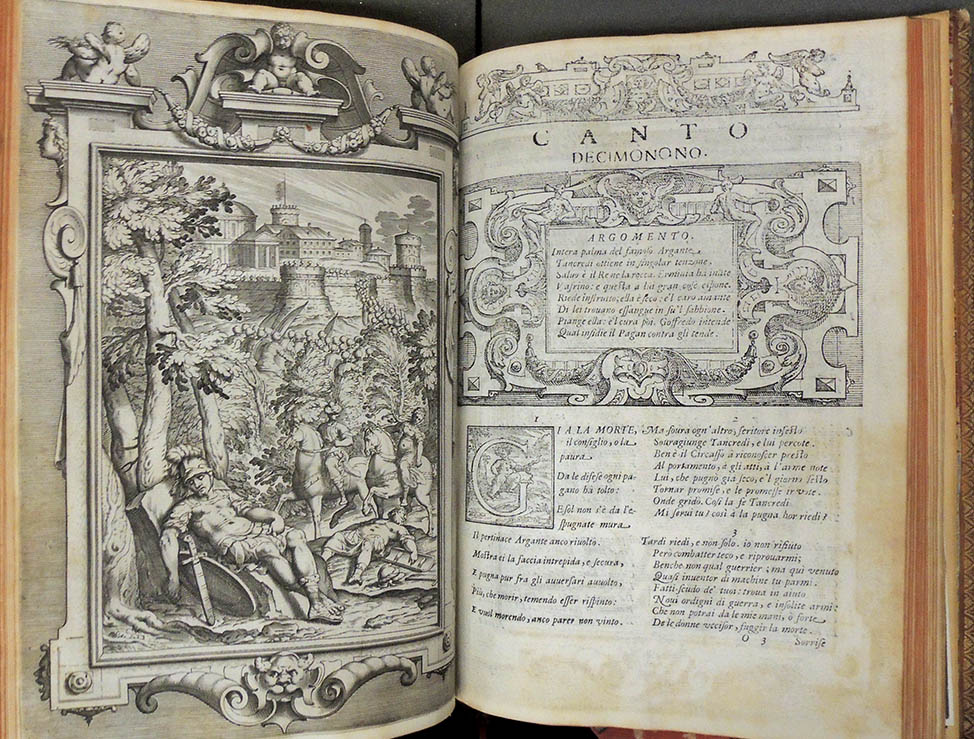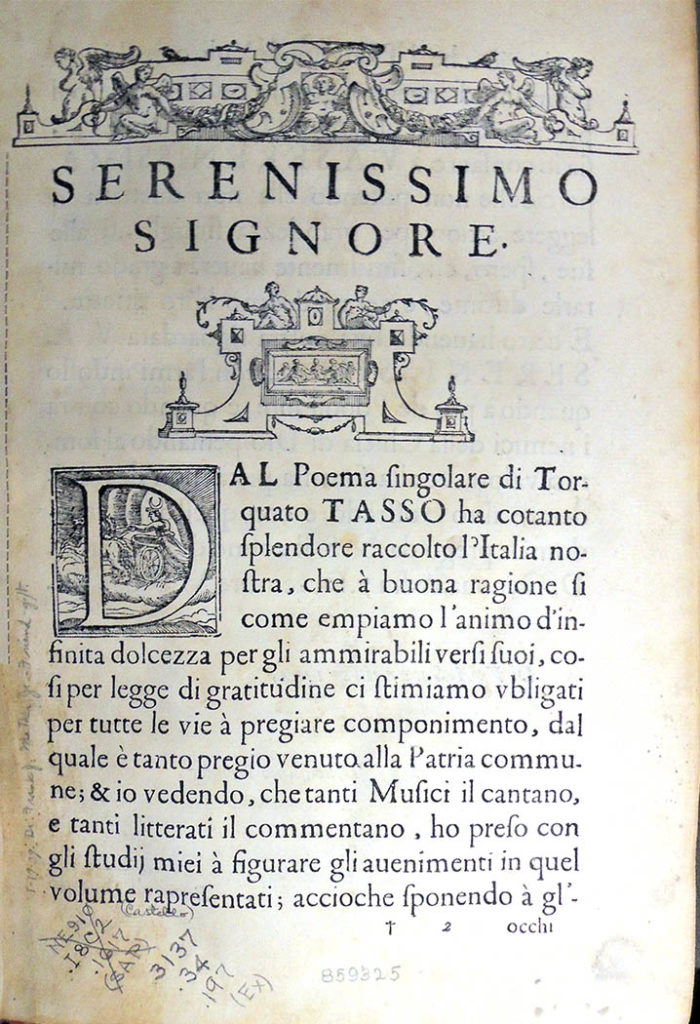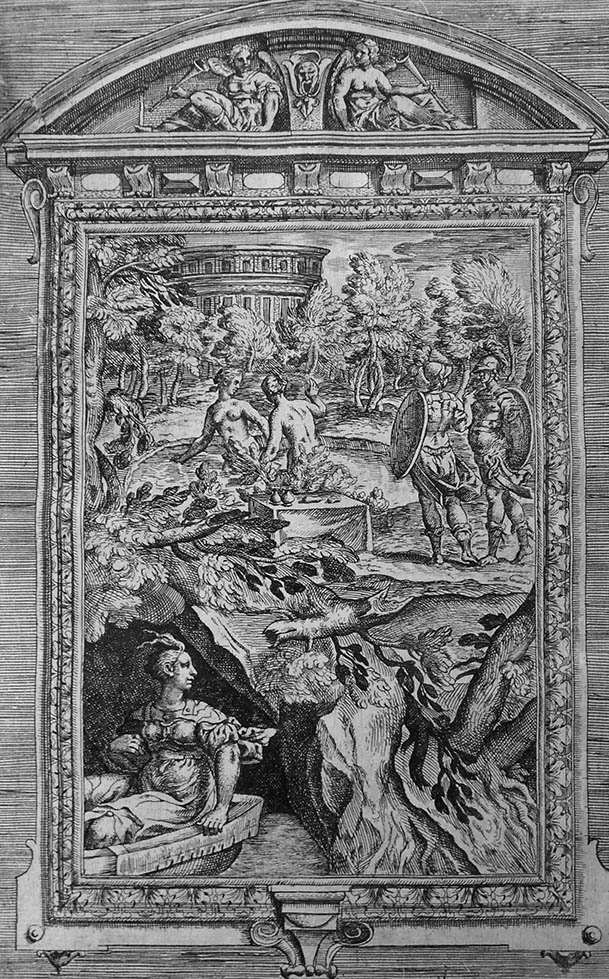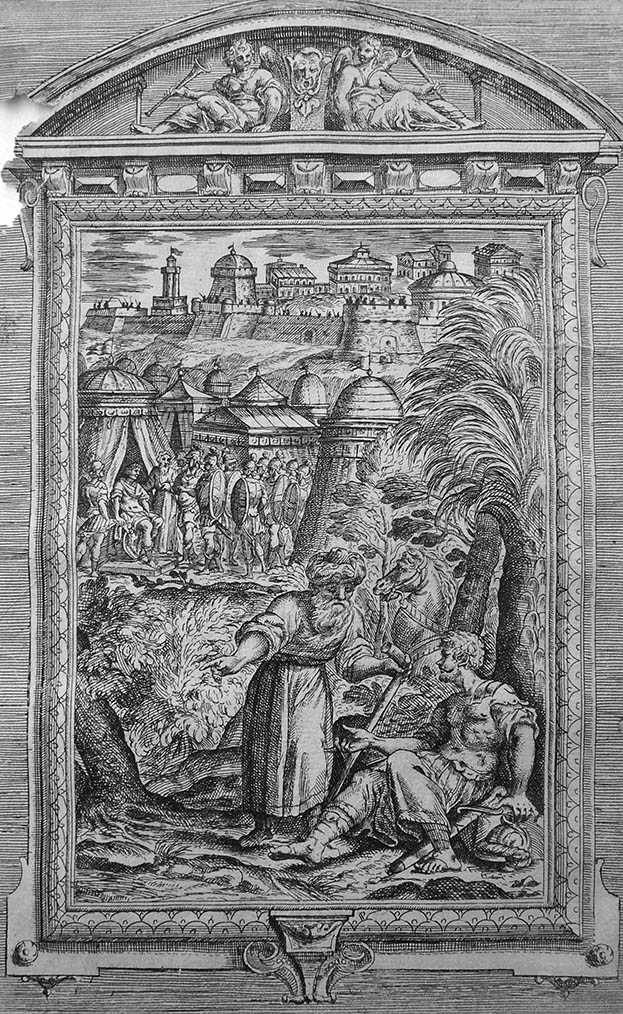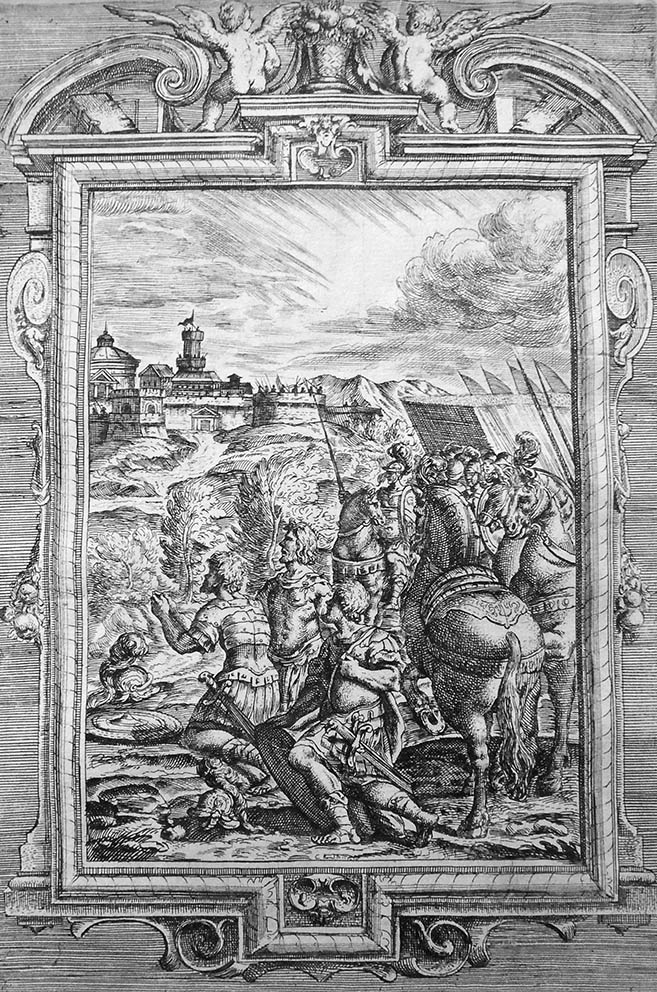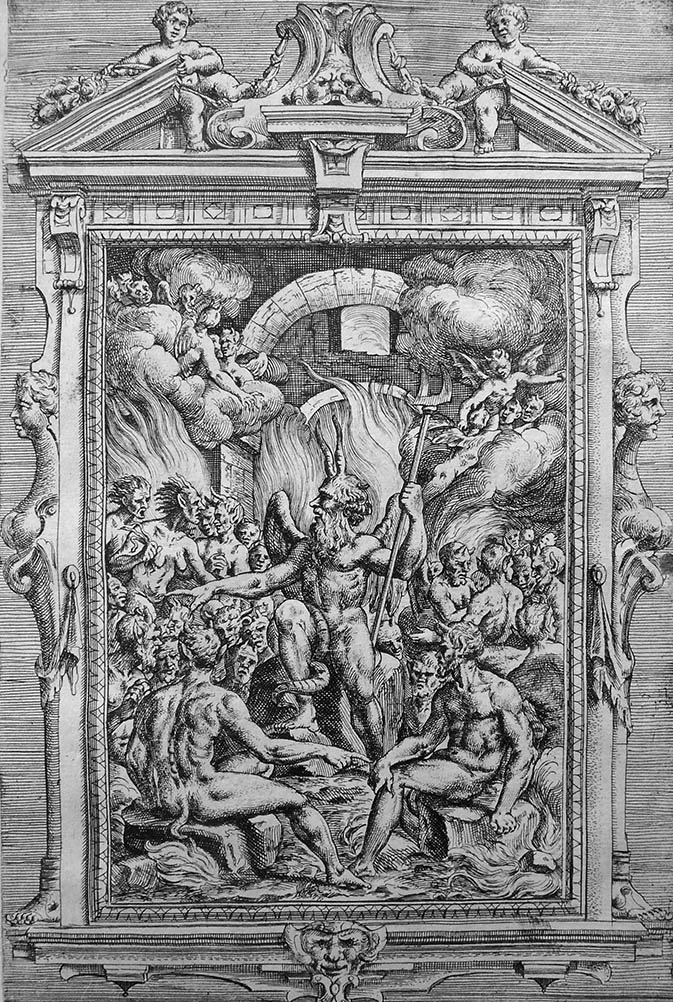 A number of people helped today to match a set of unmarked prints to a published book. The prints are some of the many sheets that have been sitting in the department for many years unidentified and uncatalogued. Stop here if you want to try it yourself before reading the answer below.
A number of people helped today to match a set of unmarked prints to a published book. The prints are some of the many sheets that have been sitting in the department for many years unidentified and uncatalogued. Stop here if you want to try it yourself before reading the answer below.
Success came first to Nicola Shilliam, Marquand Library’s Western Bibliographer, who was able to match the recognizable scenes of Jerusalem with the correct edition and illustrator.
 Torquato Tasso (1544-1595), La Gerusalemme liberata di Torquato Tasso; con le annotationi di Scipion Gentili e di Giulio Guastauini: et li argomenti di Oratio Ariosti [=The Liberated Jerusalem of Torquato Tasso; with annotations by Scipion Gentili and Giulio Guastauini: and the topics of Oratio Ariosti] (Genoa: Giuseppe Pavoni ad instanza di Bernardo Castello, 1617). Full page engraved plates facing the opening of each of the 20 cantos, engraved by Camillo Cungi (ca. 1597–1649) after designs by Bernardo Castello (1557–1629). EXOV 3137.34.197
Torquato Tasso (1544-1595), La Gerusalemme liberata di Torquato Tasso; con le annotationi di Scipion Gentili e di Giulio Guastauini: et li argomenti di Oratio Ariosti [=The Liberated Jerusalem of Torquato Tasso; with annotations by Scipion Gentili and Giulio Guastauini: and the topics of Oratio Ariosti] (Genoa: Giuseppe Pavoni ad instanza di Bernardo Castello, 1617). Full page engraved plates facing the opening of each of the 20 cantos, engraved by Camillo Cungi (ca. 1597–1649) after designs by Bernardo Castello (1557–1629). EXOV 3137.34.197
We all felt foolish. Gerusalemme Liberata of Torquato Tasso, published in 1581, is considered one of Italy’s great contribution to epic poetry and should be easily recognized. Three illustrated editions were prepared by the Italian painter Bernardo Castello, the largest and most successful this 3rd edition in 1617.
The sheets discovered in the Graphic Arts Collection, while in poor condition, may have been early proofs as the engraver Camillo Cungi worked to reproduce Castello’s drawings. On the other hand, they may have been prepared for a pirated edition. Below is one example of the proof and the published engraving.
 Close up of proof copy
Close up of proof copy
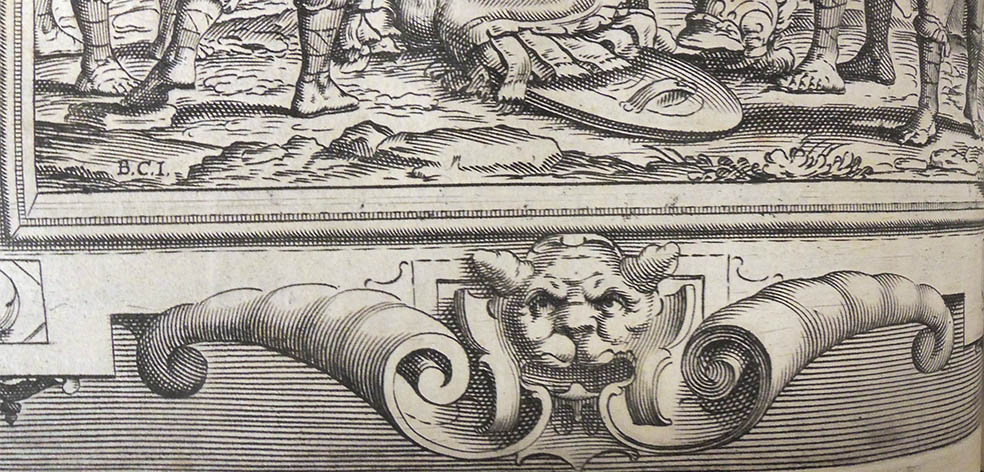 Close up of the final published engraving, note the artist’s initials in the bottom left. B.C.I. stands for Bernardo Castello invenit (designer)
Close up of the final published engraving, note the artist’s initials in the bottom left. B.C.I. stands for Bernardo Castello invenit (designer)
Here is an open library edition, if you want to see or read the whole book: https://openlibrary.org/books/OL25624814M/La_Gerusalemme_di_Torquato_Tasso
Here is a lecture on the various illustrated edition of Gerusalemme Liberata.
Finally, here are several more of the proofs in the Graphic Arts Collection, so you can compare them to the published book.

